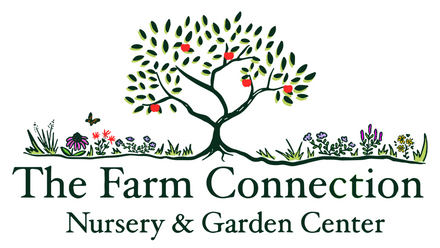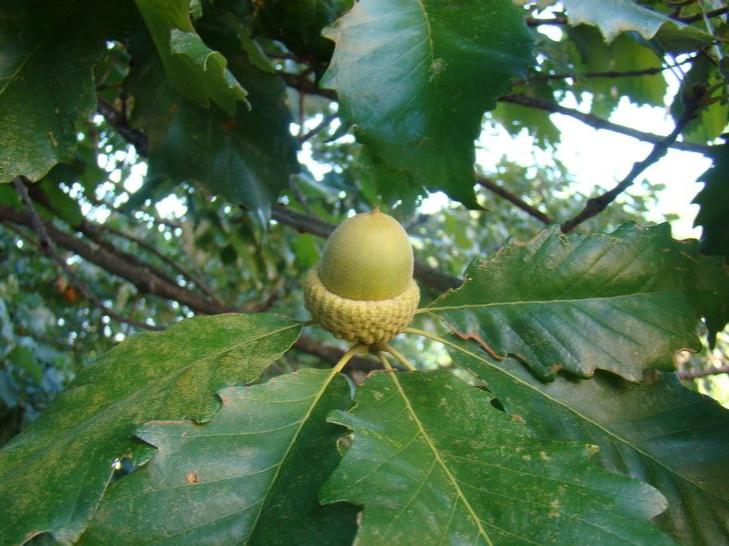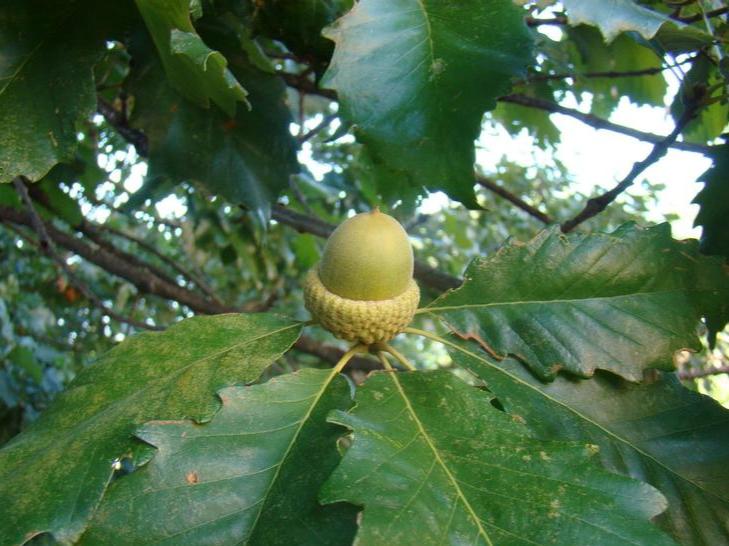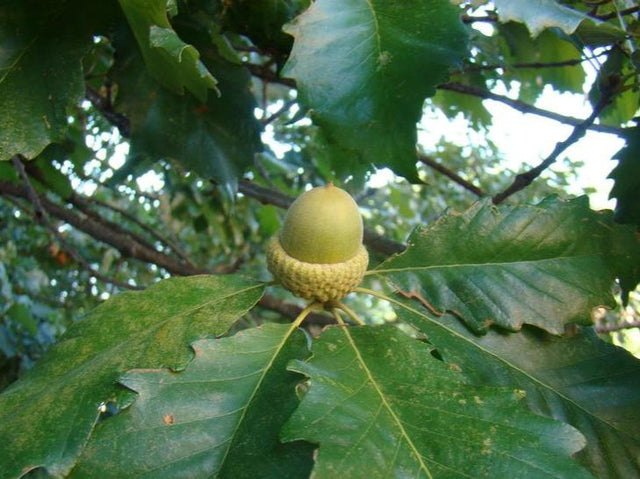Subscribe to our newsletter
Sign up for exclusive offers.
Oak, Swamp Chestnut, Bare Root
Large Sweet Acorns for Wildlife & Silvopasture
Oak, Swamp Chestnut, Bare Root - Bare Root / 6-18" Seedling is backordered and will ship as soon as it is back in stock.
Couldn't load pickup availability
Delivery and Shipping
Delivery and Shipping
Make sure to thoroughly review our entire "Shipping, Returns, Refunds, and Our Guarantee" page for all relevant details about ordering from our store.
Making a purchase from our store constitutes an agreement to all the conditions outlined in those policies.
We appreciate your support and look forward to being your favorite plant provider!
Swamp Chestnut Oak (Quercus michauxii)
Swamp Chestnut Oak is a majestic native oak of the southeastern and south-central U.S., known for its large, sweet acorns, handsome chestnut-like leaves, and tolerance of periodic flooding and moist bottomland soils. A member of the white oak group, it provides exceptional value to wildlife, native insects, and restoration efforts, and thrives in riparian buffers, floodplain reforestation, silvopasture systems, and large food forest overstory layers.
Key Characteristics
-
Sweet, Large Acorns for Wildlife and Livestock
Swamp Chestnut Oak produces some of the largest acorns among native oaks—up to 1.5 inches long—with low tannin content, making them especially palatable. These acorns are eagerly consumed by deer, turkeys, bears, squirrels, and waterfowl, and were historically used as livestock forage in silvopasture systems. -
Supports Lepidoptera and Migratory Birds
Like all native white oaks, it is a larval host for over 500 species of moths and butterflies, including Luna moth, Polyphemus moth, and Edwards’ hairstreak. The caterpillars it supports are critical food for migrating and nesting songbirds, especially during the spring breeding season. -
Adapted to Moist Bottomlands and Floodplains
Naturally found in floodplains, streambanks, and lowland woods, this oak tolerates seasonal flooding and heavy soils, while also adapting to drier upland sites once established. It’s a top choice for riparian reforestation and erosion control projects. -
Stately Tree with Outstanding Fall Color
This long-lived tree features broad, chestnut-like leaves that turn vibrant reds and burgundies in fall, adding ornamental appeal to its ecological value. Its tall, straight trunk and open, rounded crown make it well-suited as a shade tree or restoration anchor species. -
Ideal for Silvopasture and Regenerative Plantings
Historically used in open-range grazing systems due to its valuable acorns, Swamp Chestnut Oak fits well in modern silvopasture, food forest overstory layers, and bottomland restoration. Its strong wood and adaptability make it a long-term investment in soil health and ecosystem regeneration.
Product Details
- Native Range: Southeastern and south-central U.S.
- Plant Life Cycle: Deciduous tree
- Sun Requirements: Full sun to part shade
- Soil Requirements: Medium to medium-wet
- Mature Height: 60–100 feet
- Bloom Time: April–May
- Bloom Color: Yellow-green (inconspicuous catkins)
- USDA Hardiness Zones: 5–9
Swamp Chestnut Oak is a powerful species for supporting wildlife, managing flood-prone landscapes, and producing valuable acorns. A keystone tree for any regenerative system needing resilience, productivity, and ecological depth.
-
Sun RequirementsFull Sun, Part Sun/Shade
-
Soil RequirementsMedium, Medium-Wet
-
Bloom ColorYellow, Green
-
Bloom TimeApril, May
-
USDA Hardiness ZonesZone 5, Zone 6, Zone 7, Zone 8, Zone 9+
-
Native StatesVirginia, North Carolina, South Carolina, Georgia, Florida, Alabama, Mississippi, Louisiana, Arkansas, Missouri, Kentucky, Tennessee, Texas
Payment & Security
Payment methods
Your payment information is processed securely. We do not store credit card details nor have access to your credit card information.




